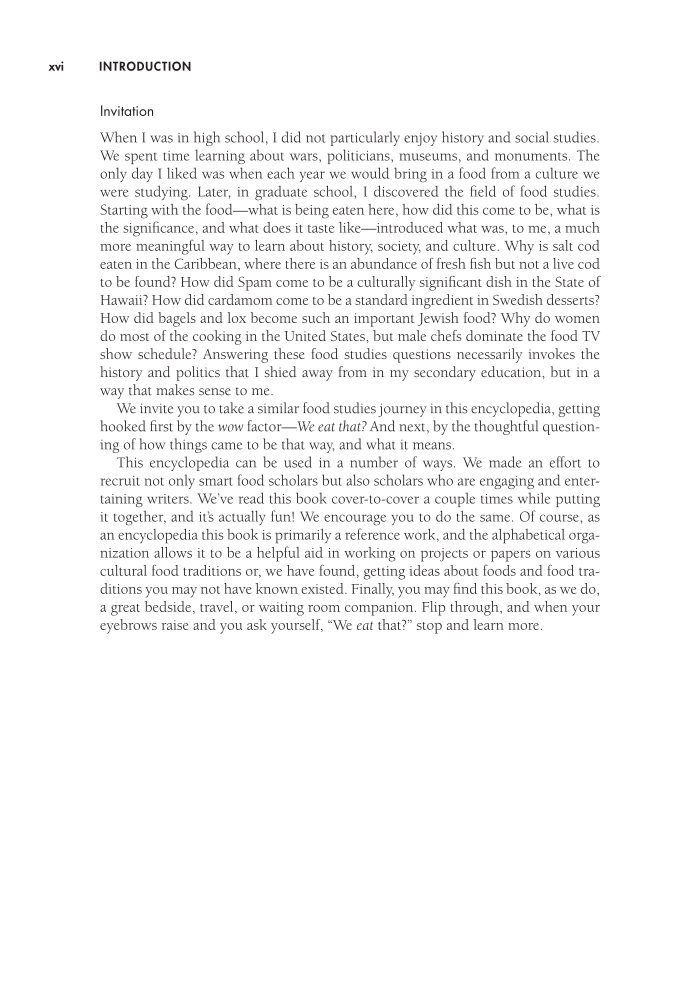xvi INTRODUCTION Invitation When I was in high school, I did not particularly enjoy history and social studies. We spent time learning about wars, politicians, museums, and monuments. The only day I liked was when each year we would bring in a food from a culture we were studying. Later, in graduate school, I discovered the field of food studies. Starting with the food—what is being eaten here, how did this come to be, what is the significance, and what does it taste like—introduced what was, to me, a much more meaningful way to learn about history, society, and culture. Why is salt cod eaten in the Caribbean, where there is an abundance of fresh fish but not a live cod to be found? How did Spam come to be a culturally significant dish in the State of Hawaii? How did cardamom come to be a standard ingredient in Swedish desserts? How did bagels and lox become such an important Jewish food? Why do women do most of the cooking in the United States, but male chefs dominate the food TV show schedule? Answering these food studies questions necessarily invokes the history and politics that I shied away from in my secondary education, but in a way that makes sense to me. We invite you to take a similar food studies journey in this encyclopedia, getting hooked first by the wow factor—We eat that? And next, by the thoughtful question- ing of how things came to be that way, and what it means. This encyclopedia can be used in a number of ways. We made an effort to recruit not only smart food scholars but also scholars who are engaging and enter- taining writers. We’ve read this book cover-to-cover a couple times while putting it together, and it’s actually fun! We encourage you to do the same. Of course, as an encyclopedia this book is primarily a reference work, and the alphabetical orga- nization allows it to be a helpful aid in working on projects or papers on various cultural food traditions or, we have found, getting ideas about foods and food tra- ditions you may not have known existed. Finally, you may find this book, as we do, a great bedside, travel, or waiting room companion. Flip through, and when your eyebrows raise and you ask yourself, “We eat that?” stop and learn more.
Document Details My Account Print multiple pages
Print
You have printed 0 times in the last 24 hours.
Your print count will reset on at .
You may print 0 more time(s) before then.
You may print a maximum of 0 pages at a time.




































































































































































































































































































































































